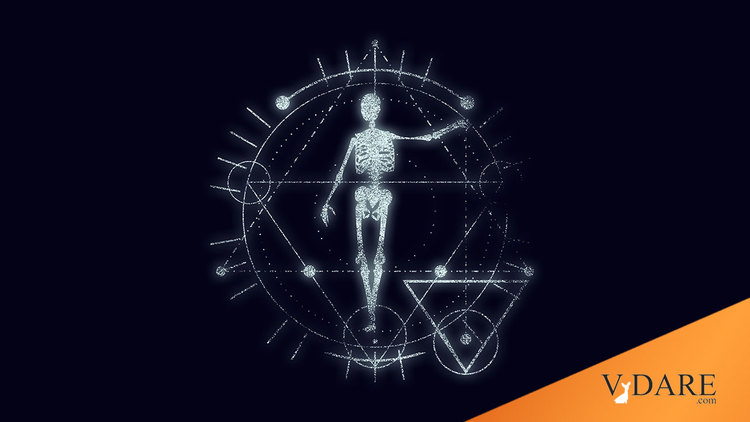
Is Geometry A Language That Only Humans Know?
By Steve Sailer
03/24/2022
From The New York Times science section:
Is Geometry a Language That Only Humans Know?
Neuroscientists are exploring whether shapes like squares and rectangles — and our ability to recognize them — are part of what makes our species special.
By Siobhan Roberts
March 22, 2022… What sorts of thoughts, or computations, are unique to the human brain? Part of the answer, Dr. Dehaene believes, might be our seemingly innate intuitions about geometry. …
Plato believed that humans were uniquely attuned to geometry …
Plato was a smart guy. He was probably wrong a lot about his most complex beliefs, like The Forms, but his “Well, of course …” assumptions in passing tended to be brilliant. For example, when I finally read The Republic a half decade ago, I noticed that he more or less anticipated in the first few pages both Adam Smith’s idea of the division of labor and David Ricardo’s of comparative advantage, with which Paul Samuelson responded to mathematician Stanislaw Ulam’s challenge to present one finding by an economist that was both true and non-trivial. Apparently, Plato’s views on economics were more sophisticated and modern than Aristotle’s, but Plato mostly couldn’t be bothered with economics.
Language is often assumed to be the quality that demarcates human singularity, Dr. Dehaene noted, but perhaps there is something that is more basic, more fundamental.
“We are proposing that there are languages — multiple languages — and that, in fact, language may not have started as a communication device, but really as a representation device, the ability to represent facts about the outside world,” he said. “That’s what we are after.”
This kind of question about “What makes Man different from the animals?” was popular when I was a child. I can recall reading a National Geographic School Bulletin article in the late 1960s about Jane Goodall and she had taken pictures of chimps breaking off sticks to use them to get ants out of a log or something like that. This was supposed to be a big deal because it disproved something that Thomas Carlyle or somebody said about man being the tool-using animal.
But, over the years, I’ve noticed that individual animals do all sorts of crazy things that, a priori, you might assume only people do.
For example, when I was a child, I assumed that interspecies altruism was a human-only trait (yeah, I know, that sounds like an implausible thing for a child to have an opinion about, but I read a lot of science fiction, which was obsessed with these kind of questions about the nature of Man) until one dinner time when my dog was begging for food from the table, so my parakeet dragged two pieces of lettuce he’d been eating off our plates (we let him fly around the house … my mother was a saint) over the edge of the table and dropped them to him. Which my dog ignored, because it was just lettuce, but still …
Back in the 1990s, The Atlantic was always trying to hit upon something popular for their back page, and so sometimes they would invite readers to send in anecdotes about their pets, and they’d send in wild stories that would make old-time philosophers’ eyes bug out. Could I trust them? Probably. My feeling is that The Atlantic in the later 20th century tended to attract earnest and sincere readers, so, yeah, I’d likely believe their letters to the editor more than those of the fraternity brothers at small liberal arts colleges who wrote letters to the editor of Penthouse about how they’d never believed the letters to the editor in Penthouse until the evening when…
But in this century, YouTube has come along and is absolutely filled to the gills with videos of animals doing the damndest things, or, as we now call it, Hundoism.
So, proving that baboons don’t think in geometric terms is interesting (and, as Plato implied, plausible), but it doesn’t prove that animals as a whole never think geometrically. For all we know, somebody will post a YouTube video tomorrow of a shoebill stork distinguishing pentagons from hexagons.
